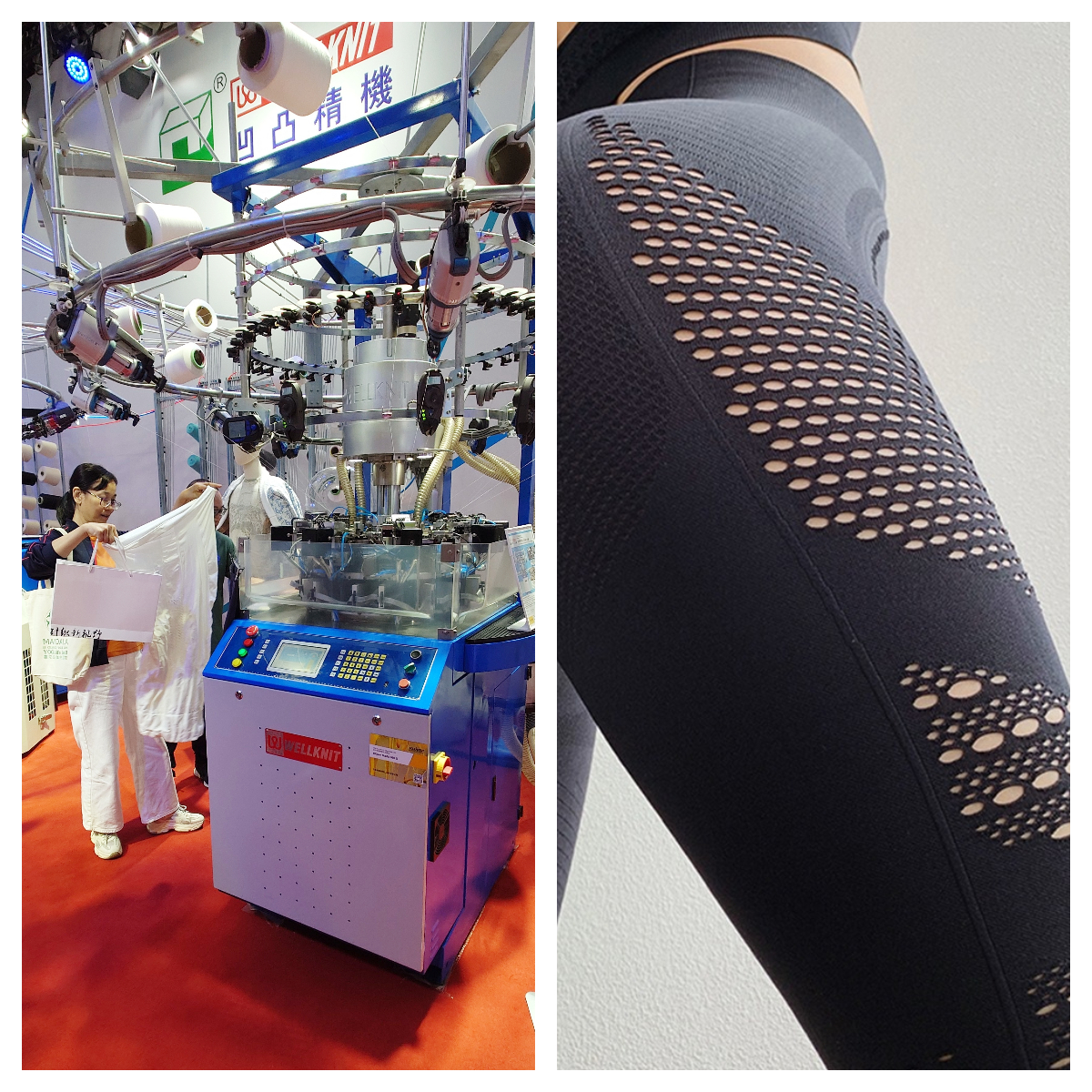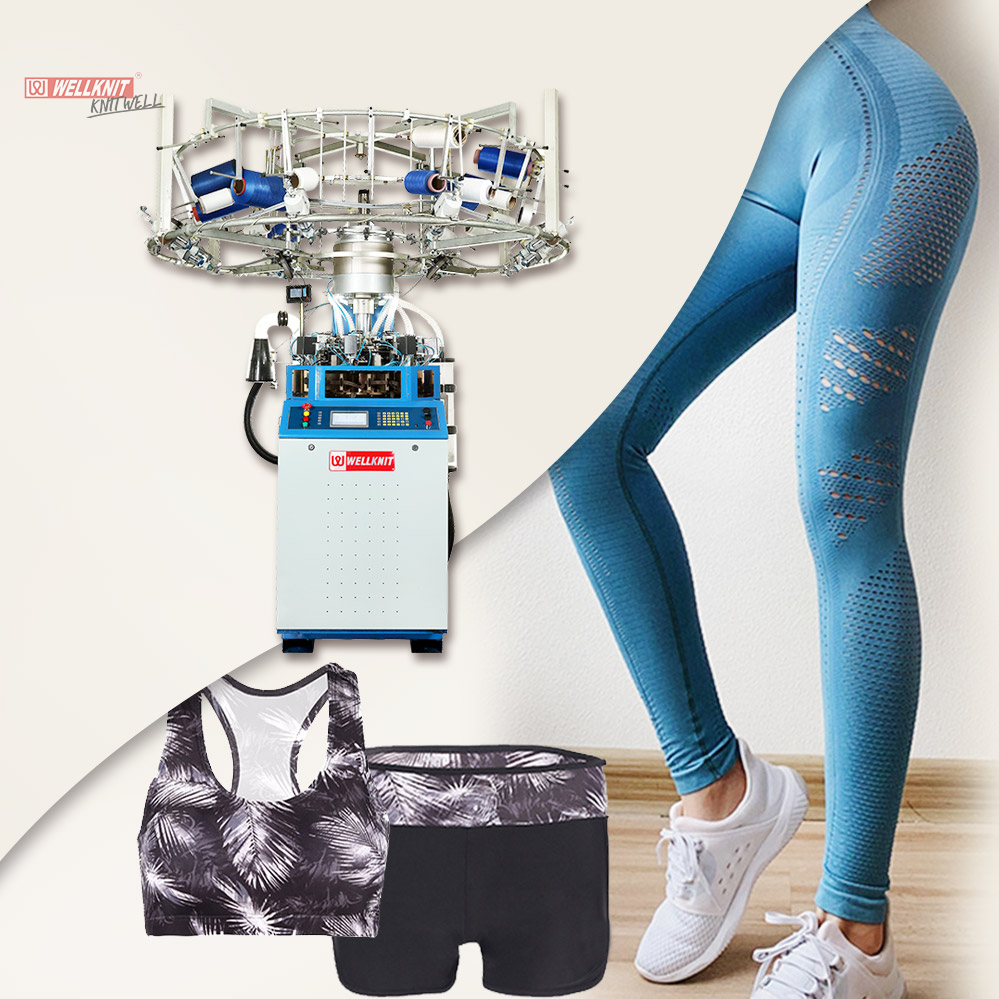- All
- Product Name
- Product Keyword
- Product Model
- Product Summary
- Product Description
- Multi Field Search
Views: 13 Author: Site Editor Publish Time: 2025-10-09 Origin: Site









In the modern era of eco-conscious fashion, consumers expect garments to deliver both performance and planet-friendly credentials. Nowhere is this dual demand more critical than in lingerie and underwear, where comfort, support, and fit intersect with sustainability and environmental impact. Wellknit Textile Technology Co., Ltd. has pioneered seamless knitting solutions that not only elevate elasticity and stretch but also embrace eco-friendly materials and processes.
Elasticity lies at the heart of any well-fitting underwear or lingerie piece. It determines how a garment moves with the body, retains its shape over time, and provides targeted support without constriction. In seamless underwear production, controlling elasticity means programming the machine to vary knit density and yarn tension precisely, creating zones of differing stretch that correspond to body contours and activity levels.
Support and Shape Retention: Underwear must cradle key areas—waistband, underbust, hips, or thighs—without rolling, sagging, or losing its firmness. Wellknit's seamless knitting machines use dynamic tension controls to reinforce these support zones with tighter stitch patterns, ensuring long-lasting shape retention while maintaining a snug, comfortable hold.
Comfort During Movement: Everyday activities, workouts, and sleep all require garments that flex in multiple directions. Four-way stretch, achieved through a combination of rib structures and elastomeric yarns, allows seamless lingerie to adapt to twisting, bending, and stretching motions without binding or digging into the skin.
Challenges of Sustainable Fibers: Traditional stretch yarns often rely on synthetic elastane (spandex) blended into polyamide or polyester fibers. While highly elastic, these blends pose end-of-life recycling challenges and rely on petrochemical inputs. Replacing or reducing elastane while retaining performance demands careful selection of alternative fibers and meticulous knitting technique.
Innovations in fiber science have introduced a range of sustainable yarns capable of delivering stretch without compromising environmental goals. Wellknit machines are engineered to handle the unique properties of these green yarns, ensuring smooth production and consistent fabric performance.
Recent breakthroughs have produced recycled elastane yarns, where pre-consumer or post-consumer waste spandex is reclaimed, processed, and spun into new elastic filaments. These recycled options:
Reduce reliance on virgin petrochemicals, cutting carbon footprint associated with raw material extraction.
Maintain similar elasticity and recovery to conventional spandex, enabling seamless machines to use familiar tension settings.
Demand precise feeding and monitoring: Recycled fibers can vary slightly in thickness, so Wellknit’s feeders detect irregularities and adjust tension in real time for uniform stretch zones.
Organic cotton, certified by GOTS or similar standards, offers a renewable and biodegradable base for intimate apparel. When blended with a small percentage (typically 5–10%) of elastane, these yarns provide gentle stretch while keeping the overall environmental impact low.
Comfort and breathability: The natural softness of cotton enhances wearer comfort and moisture management.
Biodegradability: At garment end-of-life, the cotton component decomposes, even if the elastane remains. Innovations in depolymerizable elastane promise full garment recycling in the near future.
Knitting considerations: Cotton blends can absorb moisture and swell slightly during washing. Wellknit’s machines use programmed allowances for dimensional changes, ensuring final garment dimensions remain accurate.
Emerging bio-based elastomers—such as PLA (polylactic acid) derived from corn or sugarcane—offer fully biodegradable stretch capability. While still scaling up in availability and cost-effectiveness, these yarns open doors to truly circular lingerie.
Performance characteristics: PLA-based yarns exhibit moderate elasticity and excellent moisture-wicking properties but may require coarser gauge needles due to fiber rigidity.
Machine adaptation: Wellknit’s engineering team calibrates stitch formation speeds and takes extra care to manage heat during knitting, as bio-elastomers can be sensitive to temperature.

At the core of balancing stretch performance lies Wellknit’s Smart Tension Control system. This digital innovation integrates seamlessly with their knitting machines to produce consistent, predictable elasticity—no matter the yarn type.
Automated Tension Feedback: Sensors monitor yarn tension continuously, adjusting take-up and feeding speeds within milliseconds to counteract slippage or overfeed.
Dynamic Zone Programming: Designers can specify variable tension profiles across the garment’s course, creating custom stretch maps that align with anatomical needs.
Avoiding Over-Knitting: Excessive loop length or tightness can weaken fibers. The system’s closed-loop control prevents over-knitting by capping tension changes per course, preserving yarn integrity and preventing breakage.
User-Friendly Interface: Operators access tension settings through an intuitive HMI, selecting presets for different eco-yarns or dialing in new configurations for experimental blends.
The result is a fabric that behaves exactly as intended—stretchy where it should, stable where it must—while protecting both the fibers and the machine’s operational longevity.
Investing in sustainable stretch doesn’t just reduce environmental impact during manufacturing; it extends benefits across the garment’s entire lifecycle.
Longer-Lasting Elasticity: Seamless knits with smart tension mapping retain 90% or more of their original elasticity even after 50–100 wash cycles, compared to 60–70% for cut-and-sew blends. Consumers replace lingerie less frequently, reducing overall textile waste.
Lower Energy and Water Use: Garments that maintain shape and fit require fewer re-wears and washes, cutting down on energy, water, and detergent consumption throughout the product’s use phase.
End-of-Life Recycling: Single-material or mono-blend seamless pieces—knitted entirely from one fiber type—streamline recycling processes. Textile recyclers can process these garments mechanically or chemically without pre-sorting seams or trims.
By designing for durability and circularity, Wellknit’s approach aligns with global sustainable development goals and helps brands make tangibly greener choices.

As consumers increasingly demand eco-friendly products without compromising performance, the lingerie industry must innovate at the intersection of comfort, stretch, and sustainability. Wellknit Textile Technology Co., Ltd. demonstrates that seamless knitting machines—equipped with smart tension control and designed to handle green yarns—can deliver the best of both worlds.
Brands adopting these solutions see real benefits: garments that fit flawlessly, endure repeated wear and wash cycles, and minimize environmental footprint from production through end-of-life. By embracing sustainable stretch, the future of intimate apparel is not just seamless in design but also in its commitment to a healthier planet and happier consumers.
Ready to elevate your eco-lingerie line? Discover how Wellknit’s seamless knitting solutions can bring sustainable stretch to your brand. Visit knittingmachine.com.tw for product details and consultation.
How Seamless Knitting Enhances Breathability And Fit in Eco-Lingerie
How Seamless Knitting Machines Are Revolutionizing Sports Underwear Production
Reducing Waste in Underwear Manufacturing with Seamless Knitting Solutions
How Wellknit Enhances Comfort And Efficiency in Seamless Lingerie Production
Why The Global Lingerie Market Is Shifting To Seamless Underwear Solutions
What Is The Difference Between Circular Knitting Machine And Flat Knitting Machine?
Innovative Design And Production Techniques for Breathable Fashion Wear